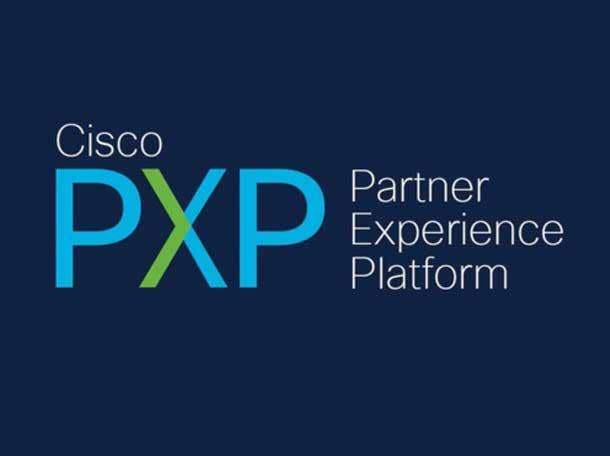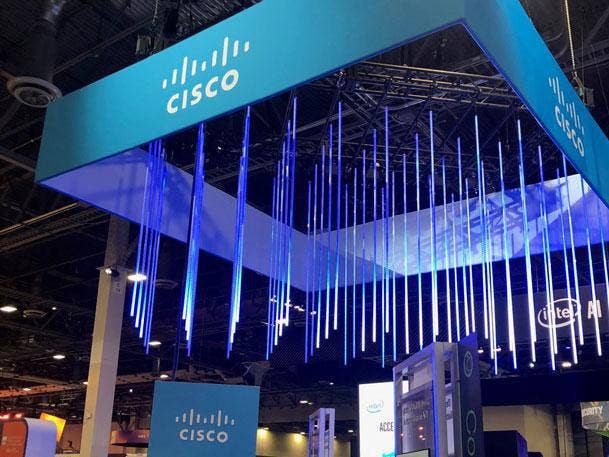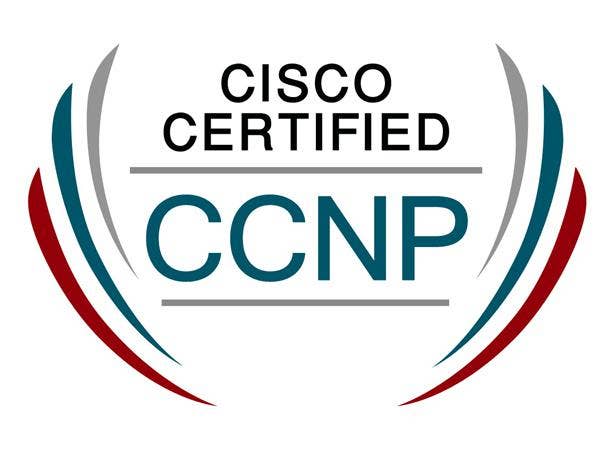Cisco’s Oliver Tuszik On Oversized SMB Opportunity: ‘Most Businesses In The World Are SMBs’
‘Most of the businesses in the world, by the way, are SMB, not enterprise. It’s the biggest opportunity. Of course, it’s more complex because instead of dealing with thousands, you need to deal with millions of customers,’ the channel chief tells CRN.

Tuszik Tells All
Cisco Systems wants the channel and end customers to know that it is all-in on SMBs. But this is a departure for the historically enterprise tech giant, whose gear has been most often seen in the wiring closets or data centers of some of the largest companies and service providers.
While the company has had a small business practice, Cisco in April cranked up its small business segment by moving in under its Global Partner Organization and therefore, under the leadership of
Cisco Channel Chief Oliver Tuszik and company. This bold move paired the company’s small business responsibility with Cisco’s largest route to market.
And the shift has been palpable, with SMB becoming the company’s fastest-growing segment during its 2022 fiscal year. The channel has responded more than enthusiastically, Tuszik said, and Cisco attributes all of its growth in the space to partners who are already working with SMBs eager for digital solutions.
But, there’s more to be done. Tuszik sat down with CRN at the tech giant’s Partner Summit earlier this month to talk about the company’s SMB focus, what Cisco is doing to help partners reach more of these clients with the solutions they are looking for, and the massive role that managed services and everything as a service plays in the SMB market.
What follows are excerpts from the conversation.

Why is SMB such a big area of focus right now for Cisco?
The SMB market is by far the biggest opportunity to grow or even double its market share. We’re very strong, thanks to our partners in the enterprise space and even in the public sector. But when we go down into the SMB space, this is an area where we only have small market share. But we’re growing, we’re outperforming over the last [few] years, and interesting enough, this is 100 partner growth and of course, it’s via big partners, distributors, and small partners. So, we have a very wide scope there with different types of partners.
One of the biggest growth opportunities in this SMB space is managed services. A lot of people would say: ‘Managed services are for the big, the complex,’ but no, it’s absolutely the opposite. And there’s two drivers. First of all, there’s a technology driver behind this because technology becomes easier to be consumed in an as a service model. And to be clear, no customers are asking for as a service or SaaS or anything, customers are asking for a simple way to get an outcome. They’re not interested in complex motions or anything like this. When we look at the technology, we can create, in a cloud software- delivered way, amazing experiences right now, which makes it easier to bundle a service around this and create an outcome. [Right now,] every company needs to have a digital business model. And in these times, they [can’t] ramp up their IT departments to the size that some of our global enterprise customers have. So, if you’re a midsized business, you don’t have the capabilities to build up a team of 10 security specialists, or specialists around cloud applications or SD-WAN, and so on. So, they are they are looking for a solution that allows them to deliver the digital capabilities that their teams need to have the advantage to be resilient and have the capabilities to grow in this time without building up a big Do It Yourself team internally. That’s why the opportunity is so good. And the opportunity is great for us and our partners, because [partners] are selling already something to [SMBs]. Now, instead of selling them a PC, a modem, a bit of network, a bit of collaboration, a printer, a bit of data center access, they create outcomes like secure access, the idea that my team can work from wherever they want on whatever device, using applications wherever in the world. And I don’t need to worry if I’m a midsized company.

How does Cisco plan on growing the SMB business with the help of partners?
We need to be where our customers want to buy and we need to offer them things the way they want to buy. We will serve whatever routes to market these customers choose and it starts with the digital way. So, we see that some of our big and even smaller partners have these marketplaces, so we’ll worked with them. We talked about API integration being more seamless and a better customer experience. And as a matter of fact, if you’re an SMB customer, you don’t want to have a marketplace for networking gear, another one for printers and another one for laptops, you want to have a better customer experience. So that’s what we’ll support. Then, of course, we support the distributors, which are helping us to cover the whole globe and to all ensure that we’re available in the different languages in the different countries so we can serve the local needs and that we have people on the street, wherever required, to support our customers.
Most of the businesses in the world, by the way, are SMB, not enterprise. It’s the biggest opportunity. Of course, it’s more complex and it has been more complex, because instead of dealing with thousands, you need to deal with millions of customers. But that’s why our DNA helps us because we were always building things up in a partnership model. And our structure, our systems, and even our offers now are more focused on this route to market or this way more customers want to buy.

What’s your response to the partners that may be smaller in size that target SMBs that want to work with Cisco directly, rather than through distribution?
I understand the frustration, so let me be clear on this one. We are trying to find a way how to best serve these types of partners. And they are essential for our future goals, to be very clear, they’re important. But we don’t have the right capabilities to support them in the way — with the quality and with the response time — that they deserve. That’s why we build up the distributor. Nevertheless, as you see, with all our investments, we are investing in the SMB market. We’re investing in marketing in the SMB market, and we are also investing in digitization. Our renewed cisco.com/SMB provides much better information and much better insight. In addition, we are adding something called partner journeys, which makes it much easier to onboard and to learn. We have more online and digital training and learning. As a matter of fact, if the expectation is that we do a classical in-person coverage, we will not be able to deliver this quality that they deserve.

Why do you think there’s a groundswell of interest from SMBs — and the partners that support them — for Cisco technology?
First of all, the network has never been more important. Everybody realized when you’re working from home or working from anywhere — when all your applications are running somewhere in the cloud. There’s a very simple logic: No network, no cloud, no application, no collaboration. So, the network is a fundamental enabler. And the network is also the way how you can make it secure. That’s why we combine “Connect and Protect.” And we’ve been able to create offers and better fit the market. Companies now realize it’s not like before, [where I’ll] just get a switch or just get a router, because they realize it’s a much more integrated part of the entire critical infrastructure. So, when you focus on the application, you immediately need to focus on the network. When you focus on security, you immediately need to focus on the network. When you think about cloud, you need to build the network to serve the cloud. That’s why we see this increasing interest. And by the way, we did our homework. We made our offers, or processes and our incentives ready to serve these kinds of these kinds of partners.

Are you seeing partners grow their investments around managed services and the as a service selling motion?
[Communications service providers selling managed services] — last quarter, we saw this going up by 34 percent. It’s pretty clear that partners ramping it up. Keep in mind, it’s a $9 billion business already and we have a huge amount of partners, big and small, telling us the way they make their profits is only around managed services. We’re seeing partners invest. We build up this new Provider program about a year ago where we said we’re turning the Cisco certification model for Gold and Premier partners and moved it to a value proposition model. What is the value you’re creating for customers? We said, there’s a value in being a system integrator, there’s a value by being a Provider, there’s a value by being a Developer developing on top of Cisco’s platform, and there’s a value of being an Advisor helping customers to build the best technical infrastructure to drive their digital transformation. What we’re seeing right now, with the amount of Provider partners. [One partner told me]: ‘Thank you for making this bold move because my life dealing with Cisco has become so much easier because now, I lose the overhead which was more or less focused on somebody who’s in the product resale business, and my benefits, my certifications, all the metrics are now a perfect fit to what I need.” And that’s what we’re doing. We see the Developer Community growing, we see the Advisor community growing, and we see the joint success growing. So, this shift to managed services is going very fast.
For as a service, Cisco Plus is a strategy. Two or three years ago, Chuck [Robbins, Cisco CEO] said: “Our strategy is to enable every customer to buy and consume the Cisco portfolio in an as a service motion.” And this is, of course, is more than just building a product. It’s building the new Provider roles, building more modular programs, building new incentive schemes. We are incentivizing our people to sell partner-managed services. And it’s about the product, but these products are more of a modular approach. The products that we currently have in the market is Cisco Plus Secure Connect — a Meraki-based solution that’s focused more on the lower SMB segment.
The partner is not interested in being a simple reseller of a great Cisco product. They want to ensure, going back to the new customer experience, that they build something that perfectly fits the need of a new buying center that is not interested in technology — hey don’t even know what a network really is. They want to have an outcome as a service that perfectly fits their needs. And that’s what they can do. We give them the building blocks; they need to glue them together and add their services.